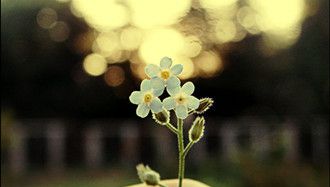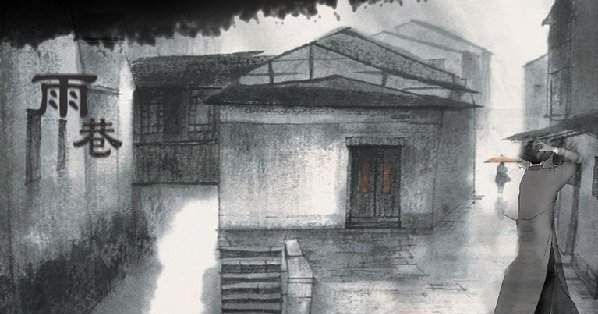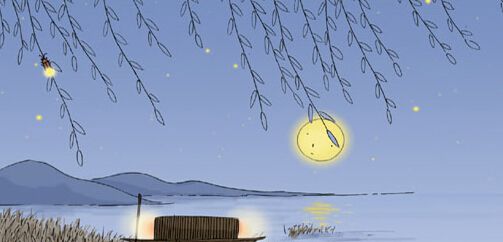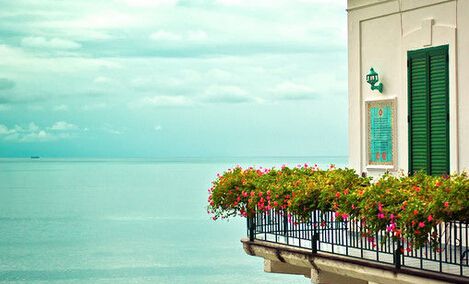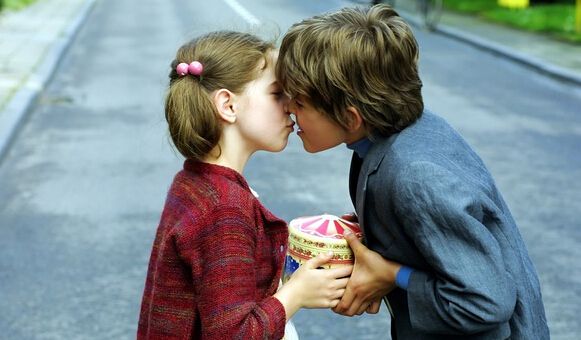The Golden Goose
|
THERE was a man who had three sons, the youngest of whom was called Dummling,2 and was despised, mocked, and put down on every occasion.3 It happened that the eldest wanted to go into the forest4 to hew wood, and before he went his mother gave him a beautiful sweet cake5 and a bottle of wine in order that he might not suffer from hunger or thirst. When he entered the forest there met him a little grey-haired old man6 who bade him good-day, and said, "Do give me a piece of cake out of your pocket, and let me have a draught of your wine; I am so hungry and thirsty." But the prudent7 youth answered, "If I give you my cake and wine, I shall have none for myself; be off with you," and he left the little man standing and went on. But when he began to hew down a tree,8 it was not long before he made a false stroke, and the axe9 cut him in the arm,10 so that he had to go home and have it bound up. And this was the little grey man's doing.11 After this the second son went into the forest, and his mother gave him, like the eldest, a cake and a bottle of wine. The little old grey man met him likewise, and asked him for a piece of cake and a drink of wine. But the second son, too, said with much reason, "What I give you will be taken away from myself;12 be off!" and he left the little man standing and went on. His punishment,13 however, was not delayed; when he had made a few strokes at the tree he struck himself in the leg,14 so that he had to be carried home. Then Dummling said, "Father, do let me go and cut wood." The father answered, "Your brothers have hurt themselves with it, leave it alone, you do not understand15 anything about it." But Dummling begged so long that at last he said, "Just go then, you will get wiser by hurting yourself." His mother gave him a cake made with water and baked in the cinders,16 and with it a bottle of sour beer. When he came to the forest the little old grey man met him likewise, and greeting him, said, "Give me a piece of your cake and a drink out of your bottle; I am so hungry and thirsty." Dummling answered, "I have only cinder-cake and sour beer; if that pleases you, we will sit down and eat."17 So they sat down, and when Dummling pulled out his cinder-cake, it was a fine sweet cake, and the sour beer had become good wine. So they ate and drank, and after that the little man said, "Since you have a good heart, and are willing to divide what you have, I will give you good luck. There stands an old tree,18 cut it down, and you will find something at the roots." Then the little man took leave of him. Dummling went and cut down the tree, and when it fell there was a goose19 sitting in the roots with feathers of pure gold.20 He lifted her up, and taking her with him, went to an inn where he thought he would stay the night. Now the host had three daughters,.21 who saw the goose and were curious to know what such a wonderful bird might be, and would have liked to have one of its golden feathers. The eldest thought, "I shall soon find an opportunity of pulling out a feather," and as soon as Dummling had gone out she seized the goose by the wing, but her finger and hand remained sticking fast to it.22 The second came soon afterwards, thinking only of how she might get a feather for herself, but she had scarcely touched her sister than she was held fast. At last the third also came with the like intent, and the others screamed out, "Keep away; for goodness' sake keep away!" But she did not understand why she was to keep away. "The others are there,"23 she thought, "I may as well be there too," and ran to them; but as soon as she had touched her sister, she remained sticking fast to her. So they had to spend the night with the goose. The next morning Dummling took the goose under his arm and set out, without troubling himself about the three girls who were hanging on to it. They were obliged to run after him continually, now left, now right, just as he was inclined to go. In the middle of the fields the parson24 met them, and when he saw the procession he said, "For shame, you good-for-nothing girls, why are you running across the fields after this young man? is that seemly?" At the same time he seized the youngest by the hand in order to pull her away, but as soon as he touched her he likewise stuck fast, and was himself obliged to run behind. Before long the sexton25 came by and saw his master, the parson, running behind three girls. He was astonished at this and called out, "Hi, your reverence, whither away so quickly? do not forget that we have a christening to-day!" and running after him he took him by the sleeve, but was also held fast to it. Whilst the five were trotting thus one behind the other, two labourers26 came with their hoes from the fields; the parson called out to them and begged that they would set him and the sexton free. But they had scarcely touched the sexton when they were held fast, and now there were seven27 of them running behind Dummling and the goose.#p# Soon afterwards he came to a city,28 where a king29 ruled who had a daughter who was so serious that no one could make her laugh. So he had put forth a decree that whosoever should be able to make her laugh should marry her.30 When Dummling heard this, he went with his goose and all her train before the King's daughter, and as soon as she saw the seven people running on and on, one behind the other, she began to laugh quite loudly,31 and as if she would never leave off. Thereupon Dummling asked to have her for his wife, and the wedding was celebrated. After the King's death, Dummling inherited the kingdom32 and lived a long time contentedly with his wife. 1. The Golden Goose: The source for this tale is Family Hassnpflug (Zipes, Complete, 731). 2. The youngest of whom was called Dummling: Sometimes the translations of the tale call the youngest son "Simpleton". Bruno Bettelheim sees the number three as representing the ego, super-ego, and id (102). Bettelheim sees the simpleton character as "the fairy tale's rendering of the original debilitated state of the ego as it begins its struggle to cope with inner world of drives and with the difficult problems which the outer world presents" (75). 3. Despised, mocked, and put down: Bettelhiem points out that the simpleton's unhappiness in not mentioned or dwelled upon (103) and "his being considered stupid is stated as a fact of life which does not seem to concern him much" (103). It is possible that the simpleton (Dummling) represents or functions as a child's feelings of inadequacy in relation to the world (Bettelheim 103-104). 4. The forest: The forest in fairy tales functions as a place of change. It has all of ". . . the symbols of all the dangers with which young people must deal if they are to survive their rite of passage and become more responsible adults" (Biedermann 141). 5. A beautiful sweet cake: The Jack Zipes edition of the tale gives pancake instead (Complete 256). 6. Little grey- haired man: An old man was ". . . regarded as the personification of the age-old wisdom of humanity or the collective unconscious" (Cirlot 243). 7. Prudent: While being prudent is usually a good thing, here it backfires. The eldest son is too prudent; he lacks compassion or charity. Because of this he fails what Maria Tater calls "the test of compassion" (284) that the old man offers him. 8. Hew down a tree: A tree can symbolize an upward trend (Cirlot 347), which does not occur to either of the eldest brothers. 9. Axe: The axe is connected to the Saints Joseph and Boniface [see below] (Biedermann 23). Both elder sons lack compassion and charity which the saints exhibited. 10. Cut him in the arm: The arm is a symbol for activity (Cirlot 19). 11. This was the little gray man's doing: It is unclear what exactly the little man is supposed to be. Zipes, as seen above, uses the term dwarf. According to Thomas Keightley, who got most of his German fairy information from books by the Grimms (216), dwarfs were considered to be ". . . beneficent and willingly serve those who have the good fortune to please them" (216). Dwarfs also gave valuable presents to agreeable strangers (Keightley 217). Keightley also writes that the dwarfs near Hartz in Germany were not to be provoked because they would injury the offender (224). There is also a theory that dwarfs are related to the dead (Lindahl et al 112). 12. What I give you will be taken away from myself: The response of the middle son is even ruder than the response of the eldest son. 13. His punishment: The story makes it clear that the sons are being punished for their treatment of the old gray haired man. 14. Leg: The leg is associated with firmness (Cirlot 181). 15. You do not understand: The father does not seem overly concerned about his third son. His response conveys that since the smarter ones failed so to must the younger one. 16. Cinders: A plain, ill tasting, cake with cheap drink. The association with cinders makes Dummling a male Cinderella (Tater 283). However, ". . . he does not have to sit at home in the ashes, and instead, with a little prodding manages to leave home and seek his fortune" (Tater 284). 17. We will sit down and eat: Dummling passes the test that his brothers fail. Tater notes that "a test of compassion posed early on in the tale determines whether the hero is eligible to carry out 'impossible tasks' "(284). 18. An old tree: Tater connects the tree to Yggdrasil, the world or cosmic tree (285). Yggdrasil and similar trees are common in many legends (Cotterell, Storm 253). Such trees produce magic fruit, water, honey, gold or silver as well as housing magical animals or beings (Cotterell, Storm 252-253). 19. Goose: A goose is usually associated with women and the household (Biedermann 156). A foolish person is sometimes called a goose, or a silly goose (Evans 476). Dummling could be considered a 'silly goose". 20. Feathers of pure gold: Feathers are considered an element of air and are connected to contemplation and faith (Cirlot 103). Feathers are also a characteristic of lightness (Biedermann 137). 21. Three daughters: Similar to the three sons in the beginning of the tale. They would also be somewhat higher in class to Dummling. 22. Sticking fast to it: Tater points out that the sisters are punished for their curiosity (284). 23. Others are there: Neither of the younger sisters has any sense. Instead of questioning or even noticing that the preceding girls are stuck to the geese, the last two sisters reach out to take a feather, even when they are warned. 24. The parson: The rector (Oxford 600). He is in charge of the church (Oxford 699). The parson is of higher rank and authority than Dummling. Unlike the three sisters, the parson is motivated by a desire to enforce proper conduct (as he sees it). 25. The sexton: An official who looks after the church (Oxford 764). Like his superior, he is not motivated by greed but by proper conduct or place. 26. Two laborers: Perhaps the lowest rank, but they have the truest intentions. They desire to help and not to take or enforce conduct. 27. Seven: A sacred/mythological number (Evans 984). It is also symbol of the perfect cycle or period, and the symbol of pain (Cirlot 233). 28. City: According to Cirlot "Jung sees the city as a mother-symbol and as a symbol of the feminine principle" (49). 29. King: Besides being the end point of the man's travels, the king functions "as an archetype in the psyche's great store of inherited symbols of higher power and wisdom" (Biedermann 196). 30. Should marry her: Zipes points out that wandering protagonist's goals tend to be "money, power, and a woman" (Fairy Tales and Art 70). 31. Began to laugh quite loudly: Bettelheim believes that making the princess laugh is to "free her emotionally" (186 and that "this is frequently achieved by the hero's making persons who normally command respect look ridiculous" (186). 32. Inherited the kingdom: Zipes notes that "Becoming king or prince at the end of a Grimms' tale is a socially symbolic act of achieving self-mastery - as well as mastery over outside forces that include women and nature" (The Brothers 98). The tale could be seen as the advancement of the lower classes. Zipes writes, "Lower-class members become members of the ruling elite but this occurs because the ruling classes need such values that were being cultivated by the bourgeoisie-thrift, industry, patience, obedience, and so forth" (Fairy Tales and Art 71). |


